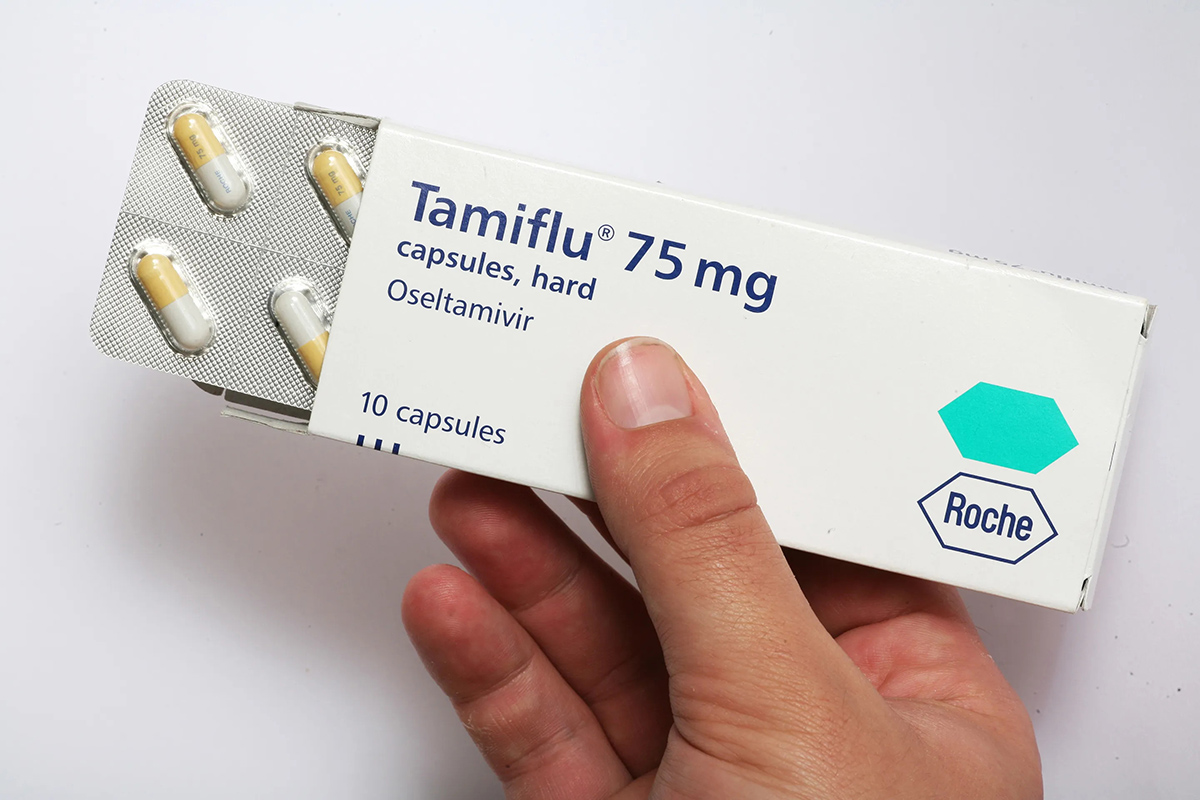

Finance
How Much Is Prozac With Insurance?
Published: November 5, 2023
Find out the cost of Prozac with insurance coverage. Get insights on how insurance can help you manage your finances for medication expenses.
(Many of the links in this article redirect to a specific reviewed product. Your purchase of these products through affiliate links helps to generate commission for LiveWell, at no extra cost. Learn more)
Table of Contents
Introduction
Welcome to our comprehensive guide on the costs of Prozac with insurance. If you or a loved one are considering Prozac as a treatment option for depression or other mental health conditions, it’s important to understand how insurance coverage can impact the overall cost. Prozac, also known by its generic name fluoxetine, is a commonly prescribed medication that belongs to a class of drugs called selective serotonin reuptake inhibitors (SSRIs).
Prozac works by increasing the levels of serotonin, a neurotransmitter in the brain that affects mood and emotions. It is often used to treat depression, obsessive-compulsive disorder (OCD), panic disorder, and other conditions such as bulimia nervosa. However, the costs of Prozac can vary depending on various factors, including insurance coverage.
In this guide, we will explore the factors that can affect the cost of Prozac with insurance, such as deductibles, copayments, and formulary coverage. We will also provide tips on how to reduce the costs associated with Prozac and navigate insurance options effectively.
Understanding the costs of Prozac with insurance is crucial for individuals seeking affordable mental health treatment. Insurance coverage can greatly impact the out-of-pocket expenses for prescription medications, making it essential to explore the various factors that contribute to the overall cost.
Whether you are considering Prozac for yourself or a family member, this guide will provide valuable insights and tips on how to optimize insurance coverage and minimize the financial burden of medication expenses. Let’s dive into the world of Prozac costs with insurance and learn how to make informed decisions when seeking mental health treatment.
Understanding Prozac
Prozac, also known as fluoxetine, is a popular medication prescribed for the treatment of depression, anxiety disorders, and other mental health conditions. It belongs to a class of drugs called selective serotonin reuptake inhibitors (SSRIs), which work by increasing the levels of serotonin in the brain.
Serotonin is a neurotransmitter that plays a crucial role in regulating mood, emotions, and overall well-being. When there is an imbalance of serotonin levels in the brain, it can lead to symptoms of depression, anxiety, and other mental health disorders.
Prozac helps to alleviate these symptoms by inhibiting the reabsorption of serotonin, allowing it to remain in the brain for a longer period. By boosting serotonin levels, Prozac can improve mood, reduce anxiety, and enhance overall mental wellness.
Prozac is available in various forms, including capsules, tablets, and liquid. The dosage and duration of treatment will depend on the specific condition being treated and the individual’s response to the medication. It is essential to take Prozac exactly as prescribed by a healthcare provider to experience its full benefits.
Prozac is not a medication that provides immediate relief. It often takes several weeks of consistent use to achieve the desired therapeutic effects. It is important to continue taking Prozac as prescribed, even if improvements are not immediately noticeable, as it can take time for the medication to reach its full effectiveness.
It’s worth noting that Prozac is not suitable for everyone. Individuals with a history of allergic reactions to fluoxetine or other SSRIs, as well as those taking certain medications, such as monoamine oxidase inhibitors (MAOIs), should not take Prozac. It is crucial to discuss any pre-existing medical conditions or medications with a healthcare provider before starting Prozac.
Like any medication, Prozac can have potential side effects. These can include nausea, insomnia, drowsiness, headaches, nervousness, and sexual dysfunction. It is important to monitor any side effects and discuss them with a healthcare provider if they persist or worsen.
Understanding how Prozac works and the potential benefits and risks associated with its use is essential for individuals considering this medication as a treatment option. Consultation and guidance from a healthcare provider are crucial in determining whether Prozac is the right choice and how it fits into an overall treatment plan for mental health conditions.
Coverage and Insurance Options
When it comes to the cost of Prozac, insurance coverage plays a significant role. Insurance companies typically offer prescription drug coverage as part of their health insurance plans, but the extent of coverage can vary. It’s essential to understand the different insurance options available and how they can affect the cost of Prozac.
Most health insurance plans categorize prescription drugs into tiers or formularies. Each tier represents a different level of coverage and cost-sharing for medications. Typically, generic drugs like fluoxetine – the generic form of Prozac – are placed in lower tiers with lower copayments, while brand-name medications have higher copayments or may require a higher deductible.
Before starting Prozac, it’s crucial to review your insurance coverage and determine which tier it falls under. This will give you an idea of the out-of-pocket costs you may incur. You can find this information in your insurance policy documents or by contacting your insurance provider directly.
Furthermore, it’s important to understand your insurance plan’s deductible and copayment structure. A deductible is the amount you need to pay out-of-pocket before your insurance coverage kicks in. If your deductible is high, you may have to pay the full cost of Prozac until the deductible is met.
Once your deductible is met, your insurance plan will likely require a copayment for each prescription fill. Copayments are fixed amounts you pay for each medication, regardless of the medication’s actual cost. For example, your insurance plan may require a $10 copayment for generic medications like fluoxetine.
In addition to deductibles and copayments, it’s important to consider prescription drug coverage limits. Some insurance plans have limits on the number of prescriptions they will cover in a specific period or impose quantity limits on certain medications. Understanding these limitations can help you plan and budget for ongoing Prozac costs.
If you have health insurance through your employer, it’s also worth exploring any additional prescription drug discounts or programs they may offer. Some employers partner with pharmacy benefit managers or offer negotiated rates that can help reduce the cost of Prozac.
For individuals without insurance or those with limited prescription drug coverage, there are alternative options to consider. Prescription discount cards and programs, such as GoodRx, can help lower the cost of Prozac. These programs negotiate discounted prices with participating pharmacies, allowing individuals to access lower prices without insurance.
It’s crucial to carefully review your insurance coverage, understand the tier placement, copayments, deductibles, and any limitations or additional discounts available. This knowledge will help you navigate your insurance options effectively and make informed decisions when it comes to managing the cost of Prozac.
Factors Affecting Prozac Costs
Several factors can influence the cost of Prozac, both with and without insurance coverage. Understanding these factors is important for individuals seeking to manage the expenses associated with this medication.
1. Insurance Coverage: As mentioned earlier, insurance coverage plays a significant role in determining the out-of-pocket cost of Prozac. The tier placement, copayments, deductibles, and limitations set by your insurance plan will directly impact the amount you pay for the medication.
2. Brand vs. Generic: Prozac is available in both brand-name and generic forms. Generic fluoxetine is usually more affordable than the brand-name version. Insurance plans typically have lower copayments for generic medications, making it a cost-effective alternative for many individuals.
3. Pharmacy Choice: The pharmacy you choose to fill your Prozac prescription can also affect the cost. Different pharmacies may offer varying prices for the same medication. It’s worth comparing prices between different pharmacies and using prescription discount cards or programs to find the best deal.
4. Dosage and Quantity: The prescribed dosage and quantity of Prozac can impact the overall cost. Higher dosages or larger quantities will require more medication and result in higher costs. It’s important to discuss with your healthcare provider to determine the most appropriate dosage and quantity for your condition.
5. Therapeutic Alternatives: In some cases, there may be therapeutic alternatives to Prozac that are equally effective for the treatment of certain conditions. These alternative medications may have different costs and coverage options. Consulting with your healthcare provider can help explore these alternatives and determine the most suitable and cost-effective option.
6. State Assistance Programs: Some states offer assistance programs for individuals who have trouble affording their medications, including Prozac. These programs can provide financial support or access to discounted medications. Researching and exploring state-specific programs can be beneficial for those in need.
7. Manufacturer Discounts: Prozac’s manufacturer may offer patient assistance programs or discounts for eligible individuals who meet certain criteria, such as income thresholds. These programs can help reduce the cost of the medication for those who qualify.
It’s important to keep in mind that the cost of Prozac can vary depending on the combination of these factors. Understanding these influences and exploring the available options can help individuals make informed decisions about managing their Prozac costs effectively.
Comparing Prozac Prices with Insurance
When considering the cost of Prozac with insurance, it’s important to compare prices across different pharmacies and insurance plans. This comparison can help you find the best deal and ensure that you are maximizing your insurance coverage. Here are some steps to take when comparing Prozac prices with insurance:
1. Check Your Insurance Formulary: Start by reviewing your insurance plan’s formulary, which is a list of covered medications. Look for Prozac or its generic equivalent, fluoxetine, and note the tier placement and associated copayment. This information will give you an idea of how much you can expect to pay for Prozac.
2. Contact Different Pharmacies: Reach out to several pharmacies in your area and inquire about the cost of Prozac with your insurance coverage. Provide them with the dosage and quantity prescribed by your healthcare provider. Keep in mind that prices can vary between different pharmacies, so it’s worth comparing prices to find the most affordable option.
3. Consider Mail-order Pharmacy: Some insurance plans offer mail-order pharmacy services, which can be a convenient and cost-effective option. Inquire about the cost of Prozac through mail-order and compare it to the prices offered at local pharmacies. Mail-order pharmacy services often provide discounted rates for prescription medications.
4. Utilize Prescription Discount Programs: If your insurance copayment is still high, consider exploring prescription discount programs or utilizing prescription discount cards, such as GoodRx. These programs negotiate discounted prices with participating pharmacies and can help reduce the out-of-pocket cost of Prozac.
5. Consult Your Doctor: If the cost of Prozac is a major concern, don’t hesitate to discuss it with your healthcare provider. They may be able to recommend alternative medications or find ways to lower the cost, such as prescribing a generic version or requesting a prior authorization from the insurance company.
By comparing Prozac prices with insurance coverage and exploring different options, you can make an informed decision to ensure the medication is affordable and accessible. Remember to consider not only the immediate costs but also the long-term implications, as mental health treatment often requires consistent medication use.
It’s important to note that prices can change over time, so staying vigilant and regularly checking the cost of Prozac with your insurance coverage is recommended. Additionally, be aware of any changes to your insurance plan’s formulary or coverage policy that may impact the cost of Prozac.
Comparing prices and exploring different options can help you find the most cost-effective way to obtain Prozac while still receiving the treatment you need for your mental health.
Tips for Reducing Prozac Costs with Insurance
If you are looking to reduce the costs of Prozac with your insurance coverage, consider the following tips:
1. Review Your Insurance Policy: Take the time to thoroughly review your insurance policy to understand the specific coverage for prescription medications. Look for information on formulary placement, copayments, deductibles, and any limitations on Prozac coverage. Knowing the details of your policy will help you make informed decisions.
2. Opt for Generic Prozac: Generic medications, such as fluoxetine, are usually more cost-effective than their brand-name counterparts. Speak with your healthcare provider to determine if switching to the generic version of Prozac is a viable option for you. Generic medications often have lower copayments and can help save money.
3. Maximize Your Insurance Coverage: If Prozac falls within a higher tier in your insurance plan’s formulary, consider exploring therapeutic alternatives that may be placed in a lower tier. Talk to your healthcare provider to see if there are other medications that may be equally effective for your condition but at a lower cost to you.
4. Utilize Mail-Order Pharmacies: Check if your insurance plan offers mail-order pharmacy services. Ordering a 90-day supply of Prozac through mail-order can often be more cost-effective than obtaining a 30-day supply from a local pharmacy. This option can help you save on copayments and reduce the frequency of refills.
5. Utilize Prescription Discount Programs: Look into prescription discount programs and utilize prescription discount cards, such as GoodRx or NeedyMeds. These programs can help you access discounted prices on Prozac, even if your insurance coverage is limited or the copayment is high. Compare prices and choose the option that offers the most significant savings.
6. Talk to Your Healthcare Provider: Engage in an open and honest conversation with your healthcare provider about your financial concerns regarding Prozac. They may have knowledge of patient assistance programs or medication coupons that could help lower your out-of-pocket costs. They may also be able to provide guidance on alternative medications or strategies to reduce costs.
7. Explore Manufacturer Assistance Programs: Check if the manufacturer of Prozac offers any financial assistance programs or discount cards. These programs are designed to help individuals who are unable to afford their medication. Contact the manufacturer directly or visit their website to find out if you qualify for any cost-saving programs.
Remember, reducing Prozac costs with insurance requires proactive research and communication. Stay informed about your insurance coverage, explore available discounts and programs, and consult with your healthcare provider to find the most cost-effective options for your unique situation.
Be aware that insurance coverage and pricing can change over time, so it’s important to regularly review your options and stay informed about any updates or changes to your insurance policy.
Conclusion
Managing the costs of Prozac with insurance is a vital aspect of mental health treatment. By understanding the various factors that affect Prozac costs, exploring insurance coverage and options, and taking advantage of cost-saving strategies, individuals can alleviate the financial burden associated with this medication.
Insurance coverage plays a significant role in determining the out-of-pocket costs of Prozac. Familiarize yourself with your insurance plan’s formulary, copayments, deductibles, and any limitations on coverage. Consider generic alternatives and therapeutic alternatives that may offer lower costs and comparable effectiveness.
Comparing prices at different pharmacies and utilizing mail-order pharmacy services can also help lower Prozac costs. Additionally, prescription discount programs and manufacturer assistance programs provide additional avenues for cost reduction.
Regularly reviewing your insurance coverage and exploring any changes to your policy will ensure that you are making informed decisions regarding Prozac costs. Staying proactive and open with your healthcare provider about your financial concerns can help uncover additional resources and strategies to reduce costs.
Remember, mental health treatment is a crucial investment in your overall well-being, and finding affordable access to Prozac is essential. By implementing the tips outlined in this guide, you can navigate the complex world of Prozac costs with insurance and make informed decisions that support your mental health journey.
Always consult with your healthcare provider and insurance provider to fully understand your options and make the best choices for your specific situation. Prioritizing your mental health and finding solutions to manage Prozac costs is an important step towards ensuring your overall well-being.














